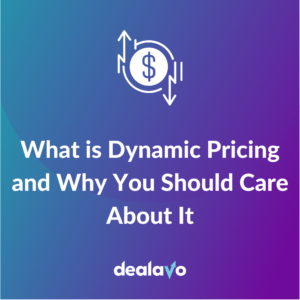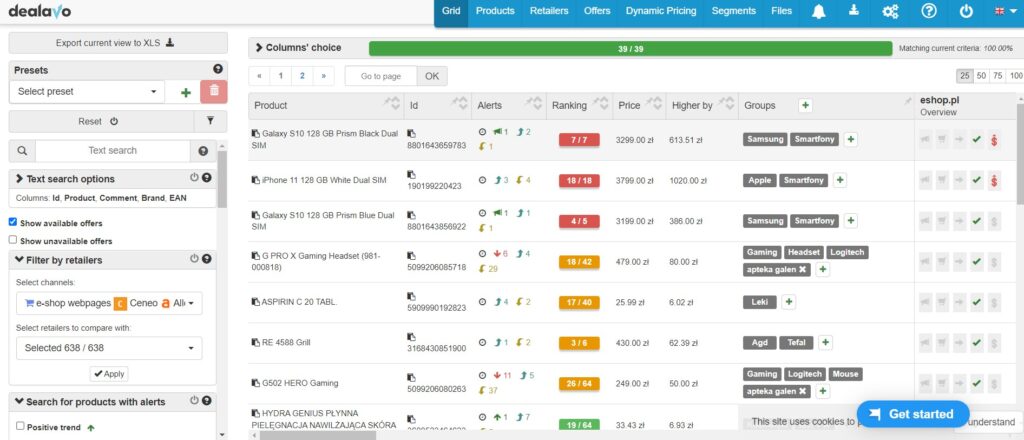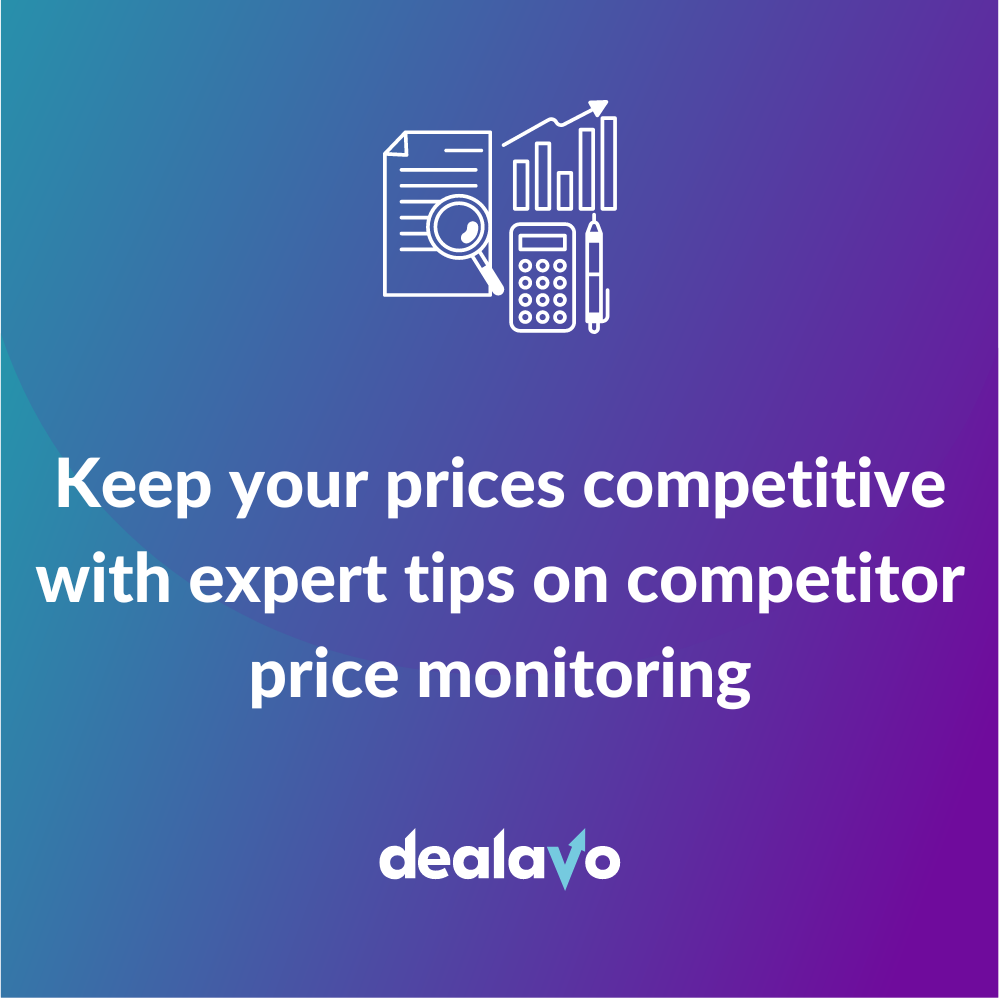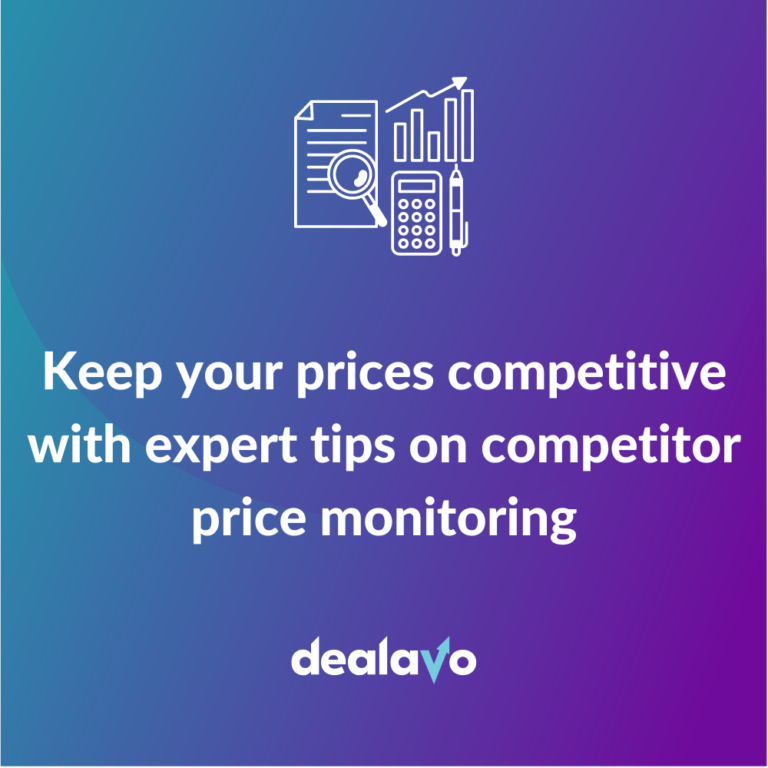
What is Dynamic Pricing and Why You Should Care About It
- 09 March 2023
The success of retailers and manufacturers today is highly dependent on their ability to stay ahead of the competition. In order to do that, understanding pricing strategies is essential. One of the most influential and beneficial techniques for influencing customers’ buying behavior is dynamic pricing. This type of pricing acts as a tool for companies to quickly respond in real-time to changes in market demand, customer preferences, and competitors’ prices – allowing them an effective way to maximize profits without sacrificing customer satisfaction. Keep reading for an overview of how dynamic pricing works, what advantages it offers businesses, who can benefit from using this method, and more!
The Benefits of Dynamic Pricing for Your Business
Staying competitive in today’s market is no easy feat. However, with the use of dynamic pricing strategies, businesses of all shapes and sizes are able to maximize their potential for increased profits – even amid challenging circumstances. Whether you’re a retailer or a manufacturer, this adaptive tactic could be just what your business needs to succeed! Let us now explore how dynamically-priced offerings can bring numerous advantages into play.
Quick price adjustment and flexibility
As the business world continues to evolve, dynamic pricing has become an invaluable tool for companies looking to maximize their profits. By leveraging market fluctuations and responding quickly in accordance with customer demand, businesses can better ensure that they are capitalizing on short-term revenue opportunities while remaining competitive in a shifting marketplace.
Time optimization and efficiency boost
Dynamic pricing is a great way to optimize time and increase efficiency in the workplace. By using dynamic pricing, businesses can adjust their prices based on market conditions and customer preferences. This allows them to maximize their profits while offering competitive prices. Additionally, dynamic pricing can also help businesses save time by automating the process of setting prices for different products or services. With dynamic pricing, businesses can easily adjust their prices without having to manually set each price individually. The benefits of dynamic pricing are numerous and include cost savings, faster turnaround times, improved customer satisfaction, and more efficient operations.
Profitability improvement
Craft an out-of-the-box pricing strategy to rocket your business ahead of the competition. Smart price automation allows you to make strategic moves that can capitalize on opportunities – even a 1 cent reduction could be enough for priority ranking and higher sales, but don’t discount raising prices when needed as it ensures items remain competitively priced or harder to source elsewhere.
Cost cutting
Companies can stay ahead of the market with dynamic pricing, adjusting prices to match fluctuating demand and maximizing efficiency. This helps businesses reduce costs without needing extra inventory or capacity investments – saving money while keeping up with customer needs.
Increasing the level of customer satisfaction
Businesses can unlock both customer satisfaction and increased profits with dynamic pricing. Tailoring prices to customers’ individual needs offers a win-win opportunity for creating positive experiences that inspire repeat purchases!

Understanding Your Target Market to Set the Right Price
The dynamic buying behaviors of customers who purchase products online are driven by a complex mixture of income level, age, sex, habits, interests, and needs. This wide range of factors makes it incredibly hard to come up with a universal offer that would captivate all buyers. To tackle this challenge, companies can benefit from market segmentation – a powerful tool promoted by the likes of Dealavo that allows firms to break down the customer market into segments according to different attributes. By presenting shoppers with personalized offers based on their individual preferences, dynamic pricing enables businesses to maximize profits and improve customer experience significantly.
By utilizing target marketing, businesses have the opportunity to tailor-fit their messages for maximum visibility and impact. Mass marketing reaches a broad audience across all demographics whereas niche marketing helps hone in on specific customers who are likely to engage with your product or service. In today’s e-commerce landscape, segmentation, and personalization can give you the edge when it comes to connecting with consumers – making them feel special while ensuring they get targeted content tailored just for them!
Nowadays, you can split target marketing into two main categories: mass marketing, and niche marketing. Let’s take a closer look at the main features of each of them.
Mass marketing
Mass marketing in e-commerce is a strategy used to reach a large audience with the same message. It involves targeting a wide range of consumers and using multiple channels to share the same message, such as email campaigns, social media ads, and search engine optimization. This strategy is often used by online retailers to increase their reach and generate more sales. The goal of mass marketing in e-commerce is to create awareness about the product or service and encourage customers to purchase it. By leveraging different channels, companies can ensure that their message reaches a larger number of potential customers.
However, there are numerous drawbacks to such a target approach, including:
- high costs – mass marketing can turn out pretty pricey, especially in e-commerce; if you don’t know who is your main audience, you may be at risk of unnecessary overspending.
- poor evaluation – mass marketing in e-commerce has become increasingly difficult to measure due to the sheer amount of data available and the complexity of the customer journey. With customers interacting with brands across multiple channels, it can be difficult to identify which strategies are working and which ones are not.
- low effectiveness – when you actually talk to everyone, you may miss your main profitable target group. As a result, your ROAS may be unsatisfying regardless of the increased sales volume levels.
Niche marketing
Niche marketing is a great way for e-commerce businesses to stand out from the competition and attract customers. By focusing on specific markets, e-commerce businesses can target their products and services to meet the needs of those markets. This strategy allows them to create a unique offering that meets the needs of their customers, while also allowing them to differentiate themselves from other companies. Niche marketing can be used in many different ways, ranging from creating custom product offerings to targeting specific demographics and geographies. By understanding the needs of their target market, e-commerce businesses can create a successful niche marketing strategy that will help them reach their goals.
Multichannel marketing
E-commerce provides businesses with the opportunity to make the most of both mass marketing and niche marketing techniques. Mass marketing is useful for gaining more appeal from a large number of potential customers, while niche marketing helps to target specific segments that may be more likely to purchase your product or service. With e-commerce, you can market to both broad and specific audiences using strategies like search engine optimization, targeted advertising campaigns on social media platforms, email campaigns, and content marketing. By combining mass marketing and niche marketing tools, entrepreneurs in the e-commerce landscape can create valuable experiences for their customers and potentially increase their customer base significantly.
Target marketing and Dynamic Pricing
It can be hard to determine the best price for a product or service in your online store, both when catering to mass and niche audiences. To get the most from your sales, you should consider investing in dynamic pricing. Dealavo is an effective tool that uses algorithms and historical data to analyze markets and identify optimal prices for individual products. By leveraging innovative pricing technology, businesses can save time, increase revenue and achieve a competitive advantage.
Automate your prices with Dealavo!
How to Implement Dynamic Pricing in Your Business
To maximize profits, dynamic pricing can be a powerful tool. However, first, you need proper dynamic pricing software. For example, let’s take Dealvo.
Dealavo makes Dynamic Pricing implementation easy with just four straightforward steps:
- Select the products or categories you want to change prices for.
- Specify rules tailored to each product’s unique characteristics such as its sales channels and locations.
- Allow the system to suggest price alterations that will give maximum efficiency while deciding whether they should require approval before being put in motion.
- Finally, monitor results closely – testing different strategies when required – so your efforts don’t go unnoticed!
Tips for Optimizing Your Dynamic Pricing Strategy
Improve the quality of your data
Crafting a successful pricing strategy requires thorough competitor analysis. Strategic use of data–including gathering and cleansing raw information, and feeding it to the right algorithms for optimization–will help you stay competitive in your market while avoiding unnecessary frustrations caused by unreliable or incorrect records. With an experienced business analyst on board, any illogical errors can be quickly identified and dealt with accordingly – capitalizing upon every opportunity for success!
Verify your prices
Testing your prices through, e.g. by using A/B tests, can help you identify the most profitable price points and adjust them accordingly as market conditions change. This way, you can ensure that your prices are always up-to-date and in line with what customers are willing to pay. Additionally, keeping up with changes in the market will also help you stay ahead of competitors and make sure that you have a pricing strategy that is both profitable and attractive for customers.
Avoid price discrimination
One of the most important things to keep in mind when using dynamic pricing is to avoid price discrimination. Price discrimination occurs when a business charges different prices for the same product or service to different customers based on their perceived ability or willingness to pay. This practice can result in unfair pricing and can lead to customer dissatisfaction and decreased sales. To ensure that your dynamic pricing strategy is successful, it is important to avoid price discrimination and ensure that all customers are charged a fair price for the same product or service.
Use segment pricing
A dynamic pricing strategy can be improved further by using segment pricing. Segment pricing is the practice of dividing customers into different segments and offering them different prices based on their segment. This allows companies to tailor their prices to better fit the needs of each customer segment, resulting in higher profits and better customer satisfaction. By using segment pricing, businesses can create personalized offers for each customer segment and increase their sales conversions.
Give peak pricing a chance
Peak pricing is an effective dynamic pricing strategy that can help businesses to maximize their profits. By using peak pricing, businesses can adjust their prices based on demand and availability of supply. This helps them to capture more value from customers during peak times, while still offering competitive prices during off-peak times. Peak pricing also helps businesses to optimize their inventory management and ensure that they have the right amount of stock available when needed. With the help of peak pricing, businesses can improve their dynamic pricing strategies and increase their revenues.
Common Pitfalls and Mistakes to Avoid When Implementing Dynamic Pricing
Don’t underestimate the customer experience
Market circumstances and competitors’ prices are crucial when it comes to adjusting the prices of your products. Nevertheless, don’t forget about your customers. After all, they decide whether to make a purchase or not. Make sure your clients won’t find the price changes unfair or too drastic. Otherwise, it’s possible the buyers will choose another seller.
Don’t change the price too often
If prices are changed too often, customers can become confused or frustrated, leading to a decrease in sales. It’s important to find the right balance between changing prices frequently enough to maximize profits while not changing them too often so that customers become unhappy. By understanding customer behavior and setting up appropriate price rules, businesses can use dynamic pricing effectively while still providing an enjoyable experience for their customers.
Remember – changing the prices just for a change is not a pricing strategy.
Don’t use unreliable and outdated data
Even though using dynamic pricing strategies may be extremely beneficial financial-wise, if bad input and unreliable data are used in the process, it can make your endeavors counterproductive. This is because bad input and unreliable data can lead to inaccurate calculations of prices and demand trends. As such, businesses should ensure that they use accurate and reliable data when setting their dynamic pricing strategies in order to ensure maximum efficiency and profitability.
Don’t forget about your margin
Dynamic pricing strategies can be a great way to maximize your profits, but it is important not to forget about your margin when implementing them. It is essential to ensure that the prices you set are still profitable for you and that you don’t end up selling your products or services at a loss.
Dynamic Pricing at Dealavo
Dealavo Software is a dynamic pricing tool that helps you stay one step ahead of the competition. It provides you with in-depth insights on price-oriented platforms, such as Amazon, eBay, and Google Shopping, so you can monitor your competitors’ prices in real time. With automated rules that help adjust your prices instantly, you can ensure that your customers always receive the lowest price available. Moreover, by using Dealavo software to its full extent, you benefit from increased profits while staying ahead of the competition.

Let Dealavo do the heavy lifting for you. Our software provides automated rules, verified by Machine Learning algorithms, to actively optimize your pricing strategy and maximize profits in real time – without the hassle of manual work or errors. Put yourself one step ahead of competitors with our easy 7-day demo so that you can fully unlock all potential revenue sources!
What is Dynamic Pricing – wrapping up
In conclusion, dynamic pricing should be adopted by all e-commerce businesses in order to stay competitive and maximize profits. With the right tool in place, such as Dealavo’s price monitoring tool, it is easy to access automatic dynamic pricing. This makes it possible for any business to take advantage of different market conditions and easily adjust pricing without any manual effort. Therefore, integrating a dynamic pricing tool into your e-commerce store can help your business stay ahead of the competition and increase your revenue. Start using Dealavo today – sign up now and experience firsthand how powerful dynamic pricing could be for your business.


